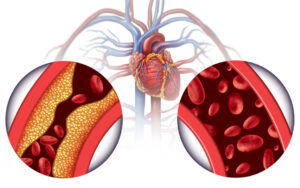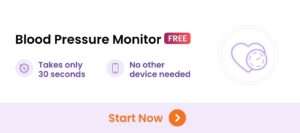Low blood pressure occurs when the volume (or amount) of blood supply to your heart decreases due to
- External or internal injuries (during an accident) or
- Loss of blood components (RBCs, WBCs, platelets, and water content) due to an underlying disease or medical condition.
Or a drop in blood pressure also occurs due to
- A faulty autonomic nervous system (the part of the brain that controls your blood pressure), or
- A faulty heart that just wouldn’t pump enough blood
As a result, the force with which your heart pumps blood through the blood vessels decreases.
Think of it this way — when gushing water flows through a pipe or a hose, it exerts pressure on the pipe. But when the amount of water is less, the pressure exerted on the pipe by the motor is also less. It’s the same principle when blood flows through our blood vessels.

Further, since the heart doesn’t have enough blood at its disposal, it wouldn’t be able to supply sufficient blood to your brain, heart, and other vital organs. Since blood carries oxygen and other essential nutrients, an inadequate blood supply to these vital organs can make you feel dizzy or light-headed.
Low blood pressure due to health conditions
Following health conditions cause low blood pressure.
1) Heart problems:
Heart diseases can cause low cardiac output. It means the heart isn’t capable of pumping enough blood to your tissues and organs.
Following heart problems are known to cause hypotension in patients.
- Heart attacks
- Bradycardia (a condition with an extremely low heart rate)
- Heart valve problems
- Heart failure
2) Pregnancy:
Low blood pressure is very common during pregnancy, especially in the first two trimesters. But blood pressure usually returns to normal levels in the third trimester.
The drop in blood pressure during pregnancy is due to
- Hormonal changes
- Changes in the cardiovascular system
3) Endocrine disorders:
The endocrine system in our bodies is responsible for the secretion of hormones such as insulin, thyroid hormones, adrenaline, etc. These hormones regulate our day-to-day internal biochemical processes. Therefore, abnormalities in some hormone levels can cause low blood pressure in patients. Disorders like Addison’s disease and diabetes also can lead to low blood pressure.
4) Dehydration:
In dehydration, your blood volume decreases, causing hypotension.
Your blood is made up of liquids and solids. The liquid part is called the plasma and comprises water, salts, and proteins. Similarly, the solid part of your blood comprises RBCs, WBcs, and platelets.
Therefore, when you are dehydrated, the water content in your blood decreases. As a result, your overall blood volume decreases. Now since the heart doesn’t have sufficient blood to pump like it normally does in a healthy person, your blood pressure decreases, resulting in low blood pressure.
Following symptoms and activities can cause low blood pressure.
- Vomiting
- Severe diarrhea
- Strenuous activities
- Overuse of diuretics
5) Blood loss:
As blood volume in our bodies decreases, so does our blood pressure. Major internal or external injuries have been known to cause life-threatening low blood pressure in patients.
6) Severe infection (septic shock):
Septic shock or sepsis is a life-threatening health condition in which your blood vessels are damaged due to a bacterial or viral infection, causing internal bleeding and reducing circulating blood volume. Loss of blood leads to lower cardiac output and supply of oxygenated blood and nutrients to vital organs in your body, leading to multiple organ failures.
Following bacterial or viral infections can lead to very low blood pressure.
- Covid-19
- Bacterial infections due to burns or wounds
- Bacterial infection of the digestive system
- Bacterial infection at catheter sites
7) Vitamin B-12 deficiency:
A lack of Vitamin B-12, folate, and iron levels in your body can lead to anemia. Due to a shortage of RBCs, your blood volume effectively decreases, leading to low blood pressure.
Low blood pressure due to medications
Following medicines causes low blood pressure due to a reduction in blood volume or loss of compensatory mechanism due to abnormal neural pathways.
- Diuretics (or water pills)
- Alpha-blockers
- Beta-blockers
- Pramipexole
- Antidepressants
- Drugs for erectile dysfunction
